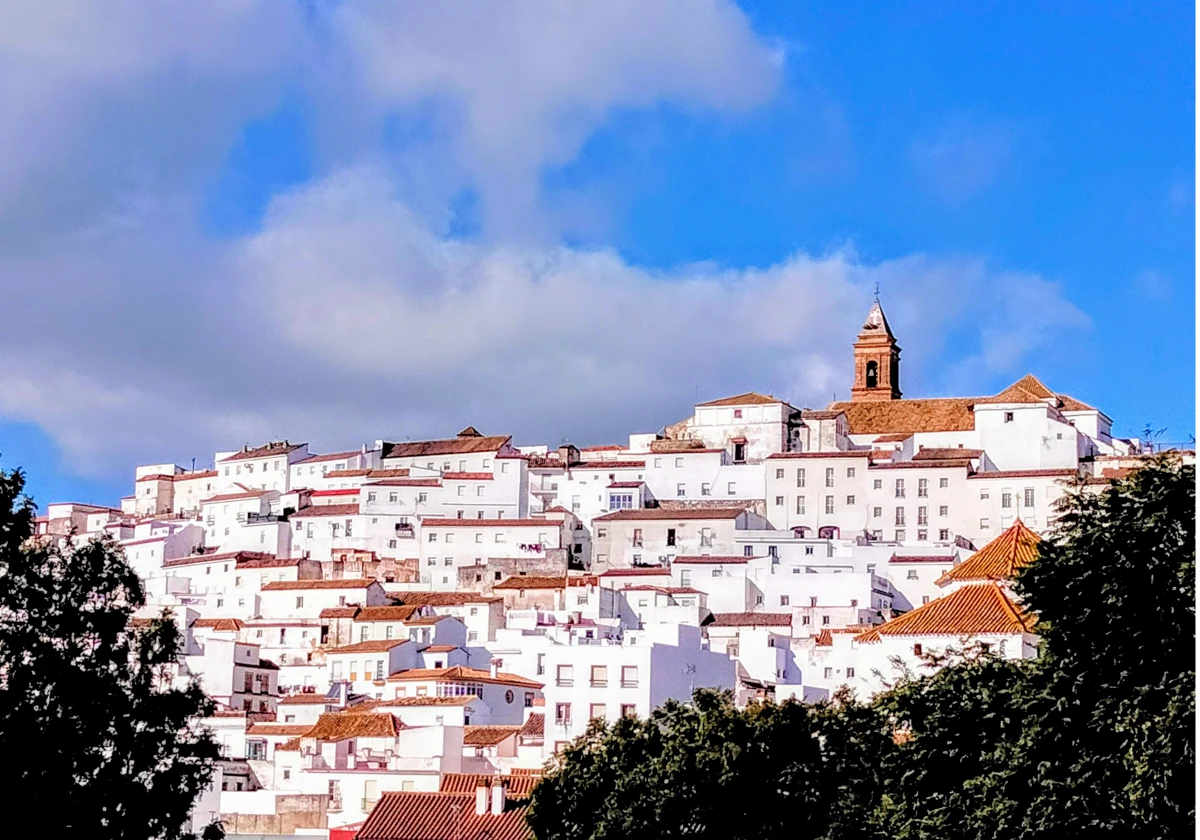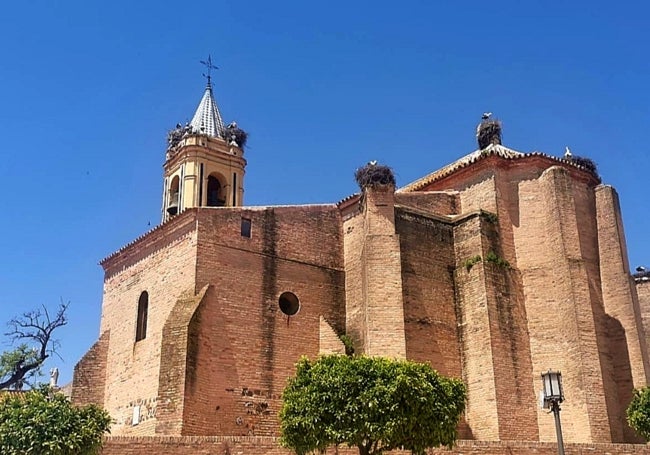

Sections
Highlight

Alekk M. Saanders
Tuesday, 23 April 2024, 21:58
St George's Day is widely celebrated, among other places, in England, Georgia, Ukraine and Malta, as well as in the Spanish regions of Catalonia and Aragon, where St George is considered the patron saint. In Andalucía there are several places dedicated to San Jorge and a town that celebrates 23 April with a bang.
The search for something English in Andalucia often leads to Huelva province, one of the most English-influenced areas of Spain. The town of Palos de la Frontera has the parish church of San Jorge Martir (St George the Martyr), built in the late 14th century.
It is thought that the dedication of the church to St George the Martyr may be due to English influence. In the past, the English royal house venerated St George both through the trading relationships of its sailors and through the Crusades. As for Andalusians, it is known that after the discovery of America, the seafarers of Huelva maintained commercial relations with the various European ports of the time, including English ports.

Historians emphasise that the Iglesia de San Jorge in Gothic-Mudejar style does not seem to be the result of a project in general, but perhaps an evolution resulting from chance. It is believed that the building retains the body of an ancient temple built on a hill. The church consists of three Mudejar naves and a Gothic altar. The centre nave has a neo-Mudejar ceiling.
The main door of the church is made entirely of stone and framed by two abutments. It is known as the 'Puerta de Américas' because much of the preparation and negotiation for the departure of the expedition that discovered the Americas took place in front of this doorway of the church. For example, in May 1492, the town council and neighbours gathered to read the Royal Pragmatic Decree ordering certain residents of Palos de la Frontera to deliver two caravels to Christopher Columbus.
Another door, in two colours of brick, red and yellow, with a conspicuous sebka decoration, is one of the most beautiful spots of the parish church. This doorway is known as the 'Puerta de los Novios' (Bride and Groom Door) because of the custom of couples to enter through it while they are still engaged and exit through the main door when they are married.
Besides, this door is also associated with discoveries. If Columbus is said to have opened the gateway to the New World, it could be literally here. The door was a direct access to the descent leading to the Palos Canal, where the port was located. So the sailors, led by the Pinzón family and Christopher Columbus, after praying and receiving the sacraments, passed through this door to set out on their voyage of discovery in the early morning hours of 3 August 1492. Next to this door is a commemorative tile with the names of various evangelisers from Palos de la Frontera who carried out their mission in the New World. Not surprisingly, in 1931 the building of San Jorge Church was declared a national monument and is a part of the so-called Lugares Colombinos ('Columbian places') tourist route.
Seville has a castle named after Saint George, or rather, a site with ruins where a medieval fortress was once built on the west bank of the Guadalquivir River. Incidentally, the first fortifications here were built by the Visigoths. Later, during the reign of the Almohads, a defence complex called Castillo de Gabir was erected here. It consisted of the castle itself, protected by a wall with ten towers, a moat and a barbican.
The castle was a key position for the conquest of Seville by Ferdinand III of Castile in 1248. From that time until 1280, the castle belonged to the military order of St George, the patron saint of knights and soldiers. Then the castle was named in honour of St George. It is reported that the Order of St George of Alfama disappeared in 1400.
Over time, the defensive importance of the castle diminished, and in 1481 it became the headquarters of the Spanish Inquisition and its prison. It is believed that Beethoven's opera Fidelio about Seville prison, where prisoners of conscience were kept at the end of the 18th century, referred to the Castillo de San Jorge.
The buildings were demolished due to the constant destruction of the walls as a result of heavy river floods, and in the 19th century a food market was established there. In 2009, Seville city hall inaugurated the Castillo de San Jorge project, which created a visitor centre that tells the story of the ruins and religious repression of the Spanish Inquisition.
This St George-themed tour in western Andalucía might end in Alcalá de los Gazules, Cadiz province. Every year, this small town with white-washed houses located in the Los Arcornocales natural park, is immersed in a special festive atmosphere for a week. This is one of the few towns in Andalucía where San Jorge is the patron saint, and 23 April is a feast day and the climax of the activities. The main scene is the church (Iglesia Parroquial de San Jorge). The church is celebrating a jubilee this year. It is 500 years since three hermitages merged into the current parish church of San Jorge, which was declared an Asset of Cultural Interest (Bien de Interés Cultural) in 2006. You can stay in a hotel with the name of San Jorge.
Publicidad
Publicidad
Publicidad
Publicidad
Esta funcionalidad es exclusiva para registrados.
Reporta un error en esta noticia

Debido a un error no hemos podido dar de alta tu suscripción.
Por favor, ponte en contacto con Atención al Cliente.

¡Bienvenido a SURINENGLISH!

Tu suscripción con Google se ha realizado correctamente, pero ya tenías otra suscripción activa en SURINENGLISH.
Déjanos tus datos y nos pondremos en contacto contigo para analizar tu caso

¡Tu suscripción con Google se ha realizado correctamente!
La compra se ha asociado al siguiente email
Comentar es una ventaja exclusiva para registrados
¿Ya eres registrado?
Inicia sesiónNecesitas ser suscriptor para poder votar.